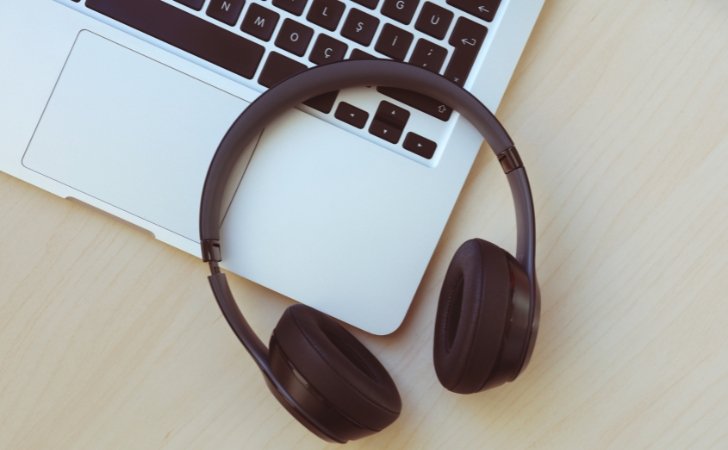AFFILIATE DISCLOSURE
This post may contain affiliate links. An affiliate means Escribr may earn referral fees if you make a purchase through our link without any extra cost to you. It helps to keep this blog afloat. Thanks for your support!
Did you know that by visiting this blog, you are doing good in the world? READ THIS.
Ready to dive into the fascinating world of transcription? We’ve got for you some valuable tips to start transcribing as a beginner.
Don’t let the initial whispers of difficulty deter you. While keen listening, nimble typing, and language accuracy are essential tools, they’re also yours to hone with practice and passion.
This journey unlocks a valuable skill for any aspiring Virtual Assistant, empowering you to transform spoken words into polished text treasures with valuable tips to start transcribing as a beginner.
But hold on, “transcription” isn’t just a one-size-fits-all term.
It’s a diverse landscape where each specialization demands unique knowledge and meticulousness.
Medical transcribers dance with complex jargon, while legal eagles navigate the precise language of the courtroom.
And guess what?
The internet, buzzing with audio and video content, thrives on the magic of transcription.
Just imagine – your skills could be the key that unlocks valuable information for businesses and audiences alike.
But wait, isn’t it easier to outsource?
Absolutely!
Yet finding a reliable, skilled transcriptionist can be a quest in itself.
So, why not step into the role yourself?
With our 13 beginner-friendly tips, you’ll be deciphering those whispers and transforming them into clear, accurate transcripts in no time.
Let’s embark on this exciting journey together, shall we?
Below are 13 super valuable tips to start transcribing as a beginner:
1. Develop strong typing and listening skills.
Good listening skills will help you accurately capture the content of audio recordings, while good typing skills will allow you to transcribe the audio quickly and efficiently.
Consider practicing both listening and typing regularly to improve your skills, and consider taking online courses or workshops to further develop your skills.
2. Practice transcribing different kinds of audio to hone your skills.
Transcribing different types of audio recordings will help you build your skills and gain experience with a variety of subjects, accents, and audio quality levels.
This will help you develop the flexibility and adaptability needed to transcribe a wide range of audio recordings effectively.
Consider transcribing audio recordings in different languages, accents, or with background noise to challenge yourself and build your skills.
Want to practice transcription? Click here.
3. Take online courses or workshops (paid or free).
Taking online courses or workshops is a great way to learn transcription techniques and improve your skills.
These resources can provide you with a structured learning environment, helping you gain a deeper understanding of transcription techniques, tools, and best practices.
They can also provide you with feedback on your work, allowing you to identify areas for improvement and track your progress over time.
Look for courses or workshops that are specific to your needs and focus on the types of audio recordings you want to transcribe.
1. Escribr Transcription Training for Beginners (Free)
2. YouTube – has a large selection of free videos on transcription techniques, tools, and best practices.
3. Skillshare – offers free and paid courses on transcription and related topics, including courses on transcription software and tools.
4. Udemy – offers free and paid courses on transcription, including courses on transcribing specific types of audio recordings, such as legal or medical transcription.
5. Coursera – offers a variety of free online courses on transcription and related topics, including courses on transcription techniques, tools, and best practices.
Keep in mind that while free courses can be a great resource for learning about transcription, they may not be as comprehensive as paid courses or workshops.
Consider your specific needs and goals when selecting a course or workshop to ensure that you get the most out of your learning experience.
4. Transcribe accurately.
Typing speed is important, but accuracy should always be the top priority.
If you type too quickly and make errors, it can be more time-consuming to go back and correct those errors than it would be to type at a slower pace with greater accuracy.
It’s important to find a balance between speed and accuracy that works for you, and to strive for accuracy above all else.
Be sure to proofread your work carefully to catch any errors or typos, and use tools such as spell check to help ensure accuracy.
By focusing on accuracy, you can deliver high-quality transcription services that your clients will be happy with, and build a reputation for providing accurate and professional transcription work.
5. Use your client’s preferred formatting style.
Asking your client ahead of time about their preferred format will help ensure that you deliver a transcription that meets their needs and expectations.
Some common format requirements include font type and size, line spacing, margins, and the inclusion of headers and footers.
By formatting the transcription document according to your client’s specifications, you can save time and avoid having to make corrections later on.
Additionally, a well-formatted transcription can make the text easier to read and understand, enhancing the overall quality of the document.
Always communicate with your client about their format requirements, and take the time to familiarize yourself with their preferred format before you start transcribing.
6. Do research for content accuracy.
When transcribing audio recordings, it’s important to ensure that proper names, technical terms, and other difficult-to-understand words are spelled correctly.
By doing internet research, you can find the correct spelling and ensure that your transcription is accurate and professional.
This research can also help you gain a deeper understanding of the subject matter, allowing you to transcribe the audio more effectively and with greater accuracy.
Consider using online dictionaries, Wikipedia, and other resources to find the correct spelling of difficult words, and be sure to double-check your work before delivering it to your client.
7. Determine the audio quality.
By listening to the audio before starting the transcription, you can determine if the audio quality is suitable for transcription, or if there are any issues that could impact the accuracy and completeness of the transcript.
If you identify any issues with the audio, such as low volume, background noise, or poor clarity, it may be necessary to communicate with the client and either request a better-quality recording, or adjust your rate to reflect the increased difficulty of transcribing the audio.
This can help to ensure that you are providing the best possible service to the client, and that the client is aware of any potential challenges with the audio file.
Additionally, proactively checking the audio quality before starting the transcription can help you avoid wasting time transcribing poor-quality audio that may need to be redone, and can help you to more accurately estimate the time and cost of the project.
8. Practice touch typing.
Practice touch typing to increase typing speed and accuracy.
Touch typing involves typing without looking at the keyboard and takes practice to master, especially for function keys.
Placing a cardboard box over the keyboard can help train you to not look down.
Over time, touch typing can improve typing speed and efficiency during transcription.
To improve your typing speed and accuracy, consider practicing regularly and using typing software or games to help you improve.
9. Get good headphones.
Good headphones can help transcribers to accurately transcribe audio by reducing background noise and allowing them to clearly hear the speech being recorded.
Noise-canceling headphones can also be useful for blocking out external distractions.
10. Invest in quality transcription software.
Transcription software like Express Scribe can make the job a lot easier and more efficient.
It can help with inserting formatting, time codes, playback speed, and spell check.
There are many options available and doing research to find the best one for you can make a huge difference in productivity and accuracy.
AI Transcription software can automate many of the repetitive and time-consuming tasks involved in transcribing audio recordings, freeing you up to focus on the more creative aspects of the job.
There’s a wide variety of transcription software options available, both free and basic tools, and more feature-rich and advanced applications.
Consider your specific needs and goals, as well as your budget and technical skills, when selecting transcription software.
Some popular ones include Otter, Happy Scribe, and Sonix.
By using transcription software, you can increase your productivity, improve the accuracy of your work, and deliver high-quality transcription services to your clients.
11. Charge your clients per audio hour.
This approach allows clients to estimate the cost of the transcription up front based on the length of the audio file.
By determining your average transcription speed and using that as the basis for your hourly rate, clients can have a clear understanding of the cost of the service.
This method of pricing can also help ensure that you are fairly compensated for your time and work.
Before setting your audio hour rate, it may be helpful to research what others in the industry are charging and to consider your own skill level, experience, and market demand.
Once you have established your audio hour rate, be clear and transparent with clients about the cost, and consider offering discounts for bulk work or repeat clients.
This can help build trust and establish a mutually beneficial relationship.
12. Network with other freelance transcribers.
Networking with other transcribers can provide you with valuable opportunities to learn from more experienced professionals, share your own experiences and challenges, and collaborate on projects.
By building relationships and learning from others in the field, you will be better equipped to grow your transcription business and achieve your goals.
13. Have a comfortable workstation.
A comfortable workstation can help you maintain good posture, avoid strain or injury, and type for longer periods of time without fatigue.
Everyone’s workstation preferences are different, so it’s important to find what works best for you.
An exercise ball is a good idea for some transcribers, as it can help improve posture and increase movement while typing.
Other transcribers may prefer a more traditional office chair or a standing desk.
The important thing is to find a workstation that supports your needs and allows you to work comfortably and efficiently.
Experiment with different options to find what works best for you, and make any necessary adjustments to your workstation as needed to ensure that you are as comfortable and productive as possible.
It is important to find a comfortable working environment and to pace yourself to avoid burnout.
Make sure to take breaks every hour or so to stretch, relax and recharge.
This can help increase productivity and prevent stress.
Additionally, finding ways to make the process more enjoyable such as listening to music or using a good-quality transcription software can help make the task less tedious.
Remember, enjoying what you do leads to better results and a more fulfilling experience.

 Otter.ai Alternatives Worth Trying" />
Otter.ai Alternatives Worth Trying" />







